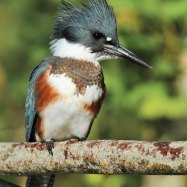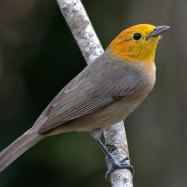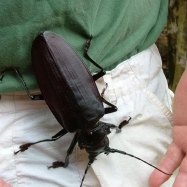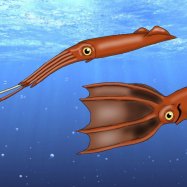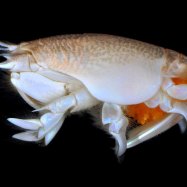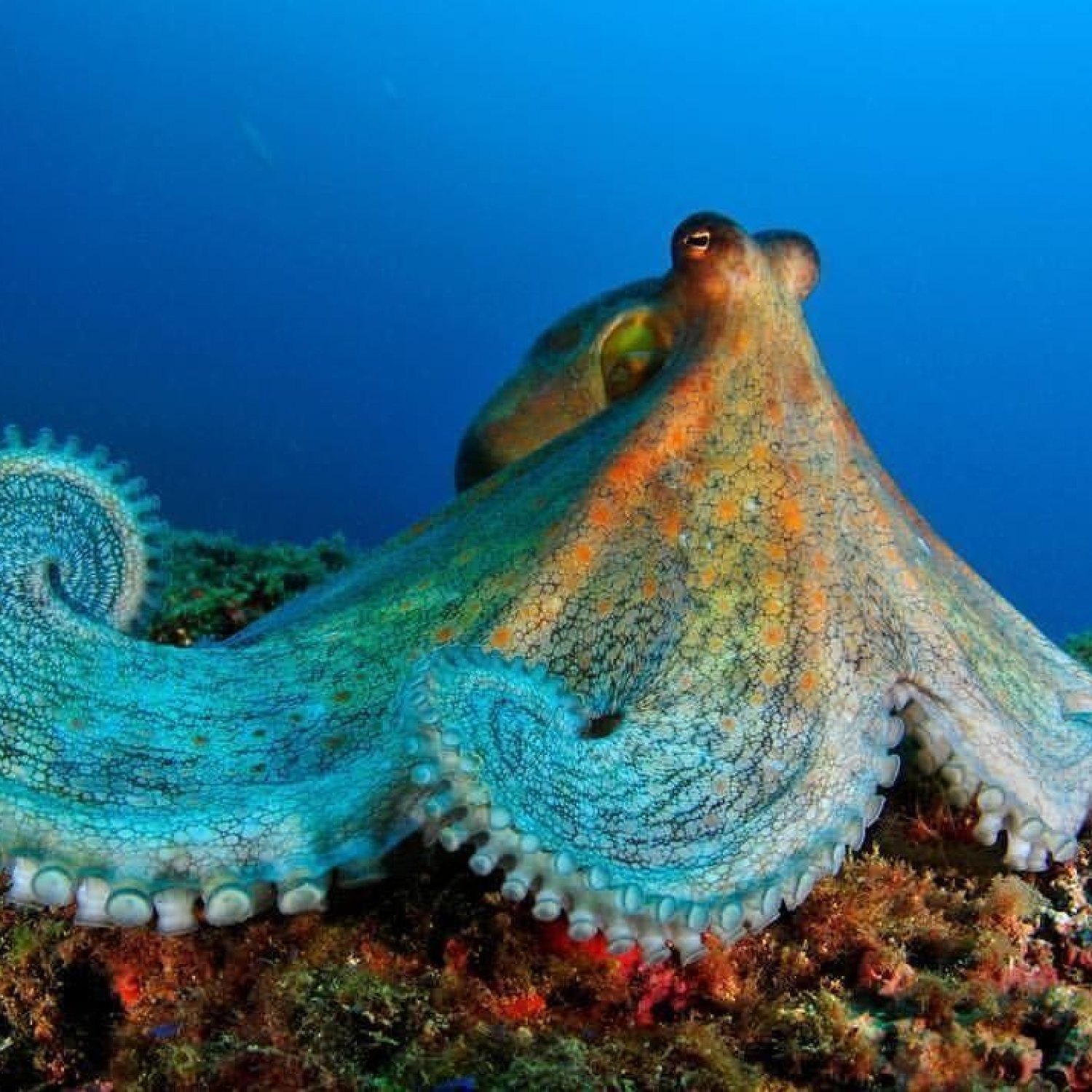
Ocean Pout
Up to 30 inches (76 cm)
The ocean pout, a member of the Zoarcidae family, is a fascinating creature found in coastal areas, estuaries, and offshore waters. With a slender, eel-like body and reaching up to 30 inches in length, it's an agile swimmer that can blend into its surroundings. While not commonly consumed in the US, ocean pout is a popular delicacy in Europe and is known for its flavorful, white meat. Its abundance makes it a sustainable seafood option for those looking to make environmentally-conscious choices.
Animal Details Summary:
Common Name: Ocean Pout
Kingdom: Animalia
Habitat: Saltwater
A Member of the Animal Kingdom
At first glance, the ocean pout may seem like just another fish, but it actually belongs to the Animalia kingdom, a diverse group of organisms that includes mammals, birds, insects, and more. Within the animal kingdom, the ocean pout falls under the phylum Chordata, meaning it has a notochord (a flexible rod-shaped support structure) during some stage of its life. This is an important characteristic that sets it apart from other marine creatures.
A Member of the Actinopterygii Class
Another interesting fact about the ocean pout is that it belongs to the class Actinopterygii, which includes all ray-finned fishes. This class is the largest and most diverse group of vertebrates, with over 30,000 known species. These fish have bony, segmented fins supported by a series of rays, which make them agile swimmers. The ocean pout's slender body and long tail are perfect examples of the distinctive features of Actinopterygii.
A Member of the Perciformes Order
Within the Actinopterygii class, the ocean pout belongs to the order Perciformes, which includes over 10,000 species of fish. This diverse group includes popular aquarium fish like angelfish and perch, as well as important commercial fish, such as tuna and mackerel Olingo. The ocean pout shares characteristics such as the presence of spines and a lateral line system, which allows them to sense vibrations in the water.
An Exclusive Member of the Zoarcidae Family
Within the order Perciformes, there are a wide variety of families, and the ocean pout belongs to Zoarcidae. This family consists of over 300 species of eel-like fish found in the Atlantic, Pacific, and Arctic oceans, as well as the Southern Ocean. The members of this family have similar physical features, including elongated bodies and a lack of scales. The ocean pout and its Zoarcidae relatives are important for both commercial and ecological purposes, as we will explore further in this article.
A Saltwater Dweller
The ocean pout, as its name suggests, primarily lives in saltwater. This makes sense considering its geographical distribution, which is primarily in the Northwestern Atlantic Ocean. This region includes waters off the eastern coast of Canada and the United States, from the southeastern coast of Labrador to Cape Hatteras in North Carolina. However, there have been sightings of ocean pout as far south as New Jersey and as far north as the Arctic Circle, indicating its adaptability to different oceanic conditions.
A Carnivorous Creature
Like most fish, the ocean pout is a carnivore, meaning it feeds on other animals for sustenance. Their diet mainly consists of crustaceans, mollusks, and other small fish found in the ocean. They use their powerful jaws and sharp teeth to capture and consume their prey. These hunting abilities make them a vital part of the marine food chain, helping maintain the delicate balance of the ocean ecosystem.
A Versatile Species
The ocean pout is a well-adapted creature that can thrive in a variety of habitats. This versatility is evident in their feeding method and geographical distribution, as mentioned earlier. But their adaptability also extends to their habitat, as they can be found in a range of locations within the ocean, including coastal areas, estuaries, and even offshore waters. This adaptability makes them an important species for study in the field of marine biology.
A Master of Camouflage
While the ocean pout may not be the most colorful fish in the sea, its body coloration plays a vital role in its survival. Most ocean pout are usually shades of brown or green, which allows them to blend in with the seafloor and avoid predators. This ability to camouflage is also aided by their body shape, which is slender and eel-like. This allows them to easily maneuver through rocks and other structures, making it easier for them to hunt and hide when necessary.
An Impressive Size
Though their body shape may give the impression of a small fish, ocean pouts can actually grow to a substantial size. On average, they can reach up to 30 inches (76 cm) in length, making them one of the larger fish in their family. This size, combined with their impressive hunting abilities, means they can consume a significant amount of food, aiding in the regulation of marine food sources.
Uncovering the Hidden Treasures of the Ocean Pout
Now that we have explored some of the general characteristics of the ocean pout, it's time to uncover some of the hidden treasures this species holds. Despite their relative obscurity, the ocean pout plays a critical role in both ecological and commercial aspects of the marine world.
A Promising Fishery Resource
The ocean pout may not be as well-known as other commercial fish, but it is still a valuable resource for fishermen in the Atlantic region. In the early 20th century, ocean pout were primarily used as bait for lobster and cod fishing. However, their commercial value has increased significantly in recent decades due to their high-quality meat, which is low in fat and high in omega-3 fatty acids. As a result, they are now also harvested for human consumption, which has led to the development of a small but thriving ocean pout fishery.
A Sustainable Alternative
In addition to their commercial value, the ocean pout also has potential as a sustainable alternative to other overfished species. With the decline of popular commercial fish, such as cod and haddock, there has been an increase in the demand for other, less familiar species, like the ocean pout. Researchers are currently studying the potential for developing a larger-scale ocean pout fishery as a more sustainable solution for the fishing industry.
A Model for Understanding Immunology
Apart from their value to the fishing industry, the ocean pout is also a fascinating species for scientific research. They have a unique and well-developed immune system, making them an ideal model for studying immunology. Their adaptability to different environments, along with their naturally high levels of antibodies, make them a valuable resource for understanding immunity in other fish and even in humans.
A Species Worth Protecting
Despite their impressive features and value, the ocean pout population has faced a decline in recent years due to overfishing and habitat degradation. This decline has resulted in them being listed as a species of conservation concern by the International Union for Conservation of Nature (IUCN). To protect the ocean pout and its important role in the marine ecosystem, measures must be taken to ensure sustainable fishing practices and the preservation of their habitats.
In Conclusion
The ocean pout may not be the most well-known fish in the ocean, but it is certainly a species worth learning about. From its classification within the animal kingdom to its unique characteristics and role in the marine world, the ocean pout has much to offer. It may even hold the key to important scientific discoveries and the sustainability of the fishing industry. As we continue to explore the vast depths of the ocean, let us not forget to appreciate the versatile and vital ocean pout.

Ocean Pout
Animal Details Ocean Pout - Scientific Name: Zoarces americanus
- Category: Animals O
- Scientific Name: Zoarces americanus
- Common Name: Ocean Pout
- Kingdom: Animalia
- Phylum: Chordata
- Class: Actinopterygii
- Order: Perciformes
- Family: Zoarcidae
- Habitat: Saltwater
- Feeding Method: Carnivorous
- Geographical Distribution: Northwestern Atlantic Ocean
- Country of Origin: Canada and the United States
- Location: Coastal areas, estuaries, and offshore waters
- Animal Coloration: Usually shades of brown or green
- Body Shape: Slender and eel-like
- Length: Up to 30 inches (76 cm)
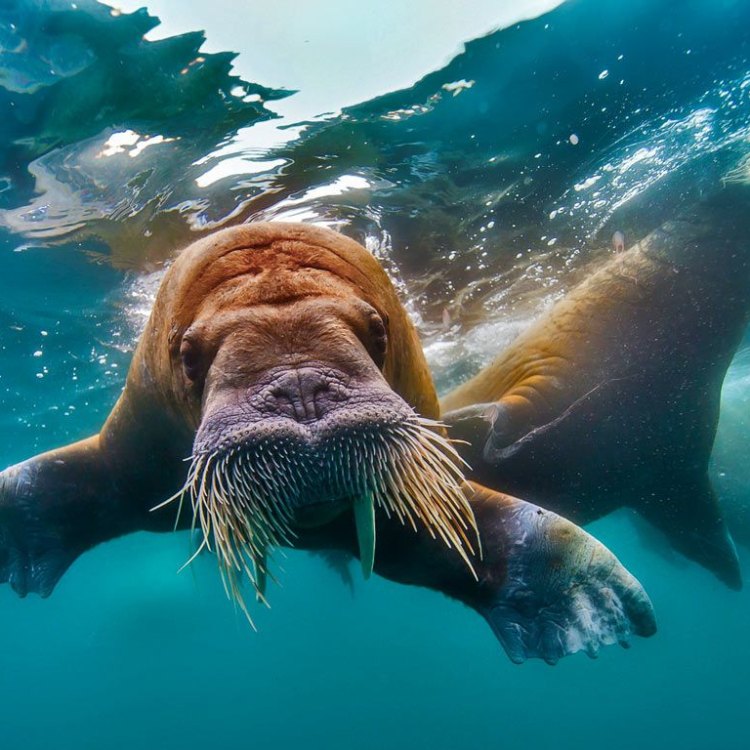
Ocean Pout
- Adult Size: Around 18-26 inches (45-65 cm)
- Average Lifespan: Up to 15 years
- Reproduction: Sexual
- Reproductive Behavior: Males and females release sperm and eggs into the water for external fertilization
- Sound or Call: Can produce grunting sounds
- Migration Pattern: Non-migratory
- Social Groups: Solitary
- Behavior: Nocturnal and burrows into the sediment during the day
- Threats: Overfishing and habitat degradation
- Conservation Status: Not evaluated
- Impact on Ecosystem: Important prey species for larger predators
- Human Use: Commercially harvested for its meat
- Distinctive Features: Large mouth and elongated body
- Interesting Facts: Can withstand freezing temperatures and survive out of water for short periods of time
- Predator: Various larger fish species and marine mammals
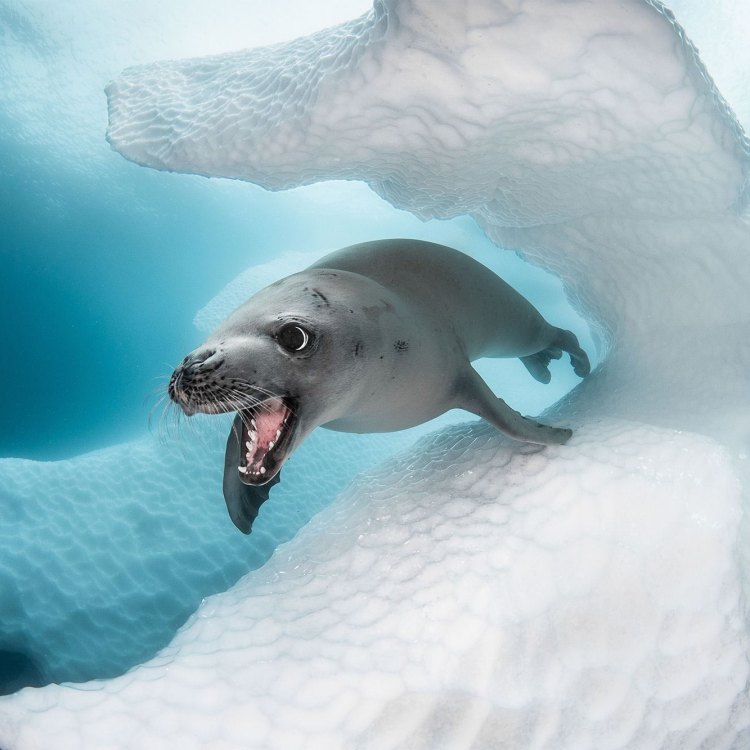
Zoarces americanus
The Amazing Ocean Pout: A Unique Fish Under the Sea
When thinking of aquatic creatures, the ocean pout may not be the first to come to mind. However, this fascinating fish has some remarkable features that make it stand out in the underwater world. From its impressive size to its extraordinary survival skills, the ocean pout is truly a remarkable species. Let's dive in and explore the unique features of this remarkable fish PeaceOfAnimals.Com.A Closer Look at the Ocean Pout
The ocean pout, also known as the eelpout, is a species of fish that belongs to the zoarcidae family. They can be found in the Atlantic Ocean, from the coast of North Carolina to Newfoundland, and all the way up to the Arctic Circle. Their preferred habitats include rocky and sandy bottoms, and they are typically found at depths of 50-1000 meters.One of the most striking features of the ocean pout is its size. As an adult, this fish can grow to an impressive length of 18-26 inches (45-65 cm). And despite its elongated body, it can weigh up to 12 pounds. This makes the ocean pout one of the largest members of the zoarcidae family.
Reproduction and Behavior
The reproductive behavior of the ocean pout is just as unique as its size. They are sexual creatures, meaning they require both a male and female for fertilization to occur Oilfish. Males and females release their sperm and eggs into the water for external fertilization to take place.During the breeding season, which typically occurs from November to April, male ocean pouts become more aggressive toward each other. This behavior is most likely due to competition for mates. Once fertilization occurs, the female can release up to 150,000 eggs.
The ocean pout is a solitary creature, preferring to live and hunt on its own. It is also a nocturnal species, meaning it is most active at night. During the day, the ocean pout burrows into the sediment on the ocean floor, using its elongated body to move and hide.
Survival Skills and Threats
Survival in the harsh underwater environment is no easy feat, but the ocean pout has some impressive survival skills. One of its most unique abilities is its ability to withstand freezing temperatures. In fact, it can survive in waters as cold as −1.8 °C.Even more impressive, the ocean pout can also survive for short periods of time out of the water. This is thanks to its thick, slimy mucus layer that helps keep its body moist. This survival skill comes in handy when the fish is caught by fishermen, as it can survive out of water until it is sold for commercial use.
However, despite its impressive survival skills, the ocean pout is facing some significant threats. Overfishing, specifically for its meat, is a significant threat to this species. Additionally, habitat degradation due to human activities such as oil spills and coastal development can also have a negative impact on their populations.
A Key Player in the Ecosystem
The ocean pout may not be on the top of the food chain, but it plays an essential role in the underwater ecosystem. They are an important prey species for larger predators such as sharks, cod, and other large fish species. Without the ocean pout, the balance of the food chain could be disrupted, leading to potential negative impacts on the entire ecosystem.Human Use and Interesting Facts
While the ocean pout may not be the most popular fish in the sea, it is commercially harvested for its meat. Its large mouth and elongated body make it a popular catch for fishermen as it can be sold for consumption. In addition, in some cultures, the ocean pout is considered a delicacy.Apart from its human uses, the ocean pout also has some interesting facts that may surprise you. As mentioned earlier, it can survive out of water for a short period, but it can also live for up to 15 years. Furthermore, the ocean pout has a unique ability to produce grunting sounds, most likely for communication purposes with other fish.
Predators and Conservation Status
Like most creatures in the ocean, the ocean pout faces threats from predators. Larger fish species, such as cod, haddock, and various marine mammals, are known to consume the ocean pout. However, the biggest threat to this species is human activities, as mentioned before.Sadly, the ocean pout's conservation status is currently listed as "not evaluated" by the International Union for Conservation of Nature (IUCN). This means that there is not enough data to determine the exact status of their populations or the potential risks they may face in the future. However, continued monitoring and sustainable fishing practices are crucial to ensuring the survival of this unique fish.
In Conclusion
The ocean pout may not be the most talked-about creature in the underwater world, but it is undoubtedly a unique and remarkable fish. Its size, reproductive behavior, and survival skills make it stand out from other marine species. While it may face some threats, this fish plays an essential role in the ecosystem and is commercially harvested for its meat. Continuing to learn about and appreciate the ocean pout can help ensure its survival and maintain the delicate balance of our underwater ecosystems.
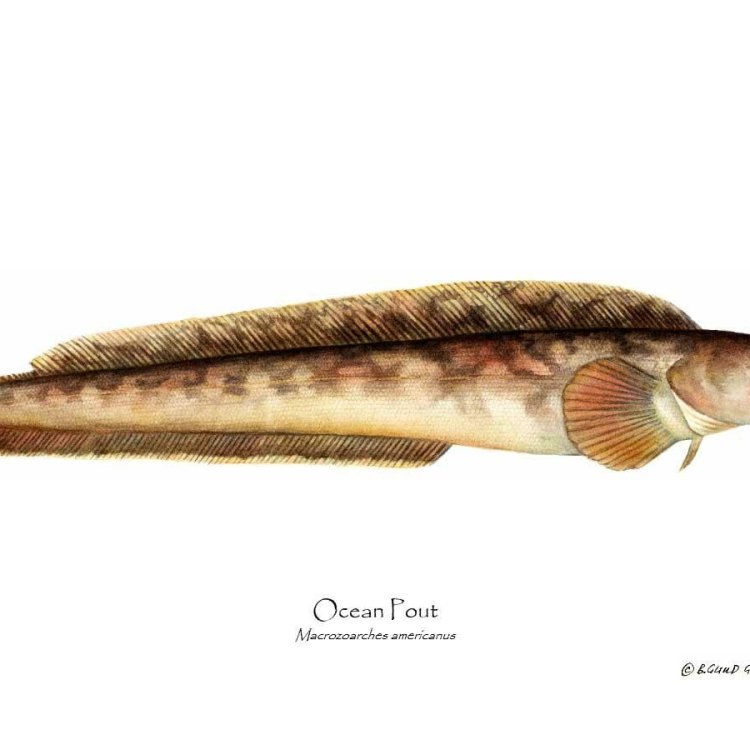
Disclaimer: The content provided is for informational purposes only. We cannot guarantee the accuracy of the information on this page 100%. All information provided here may change without prior notice.



